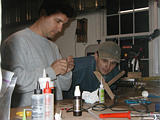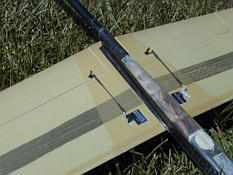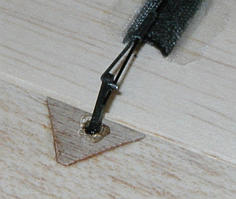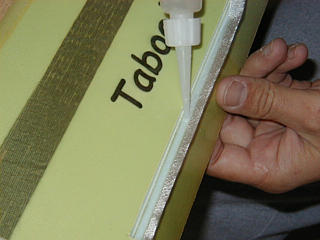Taboo XT home
Taboo XL home
Construction notes
Construction tips
Ordering info
IHLGF 2002
HLG seminar
|

|
This page contains various tips/links/photos
that will be helpful to you when building your
Taboo XL and can be applied to almost any other
HLG kit. The page will be updated whenever I have
new photos or techniques, so please come back and
visit this page frequently.
|
First, the web-site for the old Taboo kit is still
alive and the section with construction photos contains
some very valuable information about building a polyhedral DLG kit. The
steps and techniques described on that page are almost identical to those
required for the construction of the polyhedral Taboo XL, while
building the aileron/flaperon Taboo XL includes a few more steps related to finishing
the wing. Visit that web-page and use the described techniques when
building you next DLG kit.
|
This page
shows the process of assembly of an aileron/flaperon
wing, and installing radio gear in it. The fuselage and tail assembly process
of an aileron plane is the same as for the polyhedral plane and is already
described on the above mentioned web-page. The wing assembly of an aileron wing
involves cutting the holes for the
servos, installing control horns and servos, installing servo wiring and connectors,
and installing the aileron/flaperon pushrods. Click on the picture to visit
the wing assembly page.
|

|

|
This page
shows how to make a sleek detachable pushrod end using an L-shaped piece of
soft steel wire and a piece of heat shrink tubing. The pushrods on Taboo XL
are made of very thin (0.030" diameter) carbon rods. The carbon rod is flexible
enough to serve as the keeper wire. This pushrod end is especially useful
for detachable stab configuration, when the pushrod must be disconnected
every time when the stab is removed from the fuselage. Click on the picture to
visit the page with photos of the pushrod end.
|
|
This page
will tell you how to cure the aileron flutter problems on your aileron DLG.
Facing aileron leading edges with fiberglass increases the torsional
stiffness of the aileron and practically eliminates the possibility
of the aileron flutter.
|

|
|



